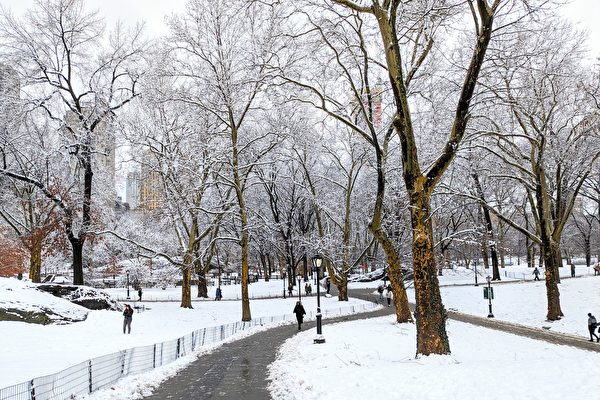The US National Oceanic and Atmospheric Administration (NOAA) released its 2024-2025 U.S. Winter Outlook on Thursday, October 17. The outlook provides predictions for the climate conditions in the coming months. It suggests that the southern regions of the US will experience warmer and drier conditions compared to previous winters, while the northern regions may see rain, snow, and freezing temperatures.
According to the report issued by NOAA’s Climate Prediction Center, the slow formation of La Niña will influence the upcoming winter in most parts of the US. The outlook covers the period from December 2024 to February 2025 and includes information on possible temperature, precipitation, and drought conditions nationwide.
NOAA predicts that the northern continental US will experience above-average precipitation this winter, especially in the northwest Pacific coastal areas, the Great Lakes region, and northern and western Alaska. Conversely, areas from the southwestern Four Corners region to the southeastern and Gulf Coast states, as well as the lower latitude states along the central Atlantic, are expected to have below-average precipitation.
Jon Gottschalck, Director of the Climate Prediction Center of the National Weather Service, stated, “This winter, a developing La Niña is expected to impact the upcoming winter pattern, particularly affecting our precipitation outlook.”
La Niña, expected to form later in the fall, typically brings storms to the northern US regions and leads to warmer and drier conditions in the southern regions. Drought conditions in the central and southern plains of the US are expected to persist and worsen.
From the southern US to the eastern Great Lakes region, the East Coast, New England, and northern Alaska, temperatures are projected to be above average. The Gulf Coast and most parts of Texas are likely to experience the highest probability of above-average temperatures.
The likelihood of below-average temperatures is highest in southern Alaska, extending from the northwest Pacific coastal areas to the northern High Plains, where temperatures may fall below average.
In other areas, the probability of below, near, or above average seasonal temperatures is equal.
States in the Great Lakes region are most likely to experience above-average precipitation, while northern and western Alaska, the northwest Pacific coast, and the entire northern US region also lean towards above-average precipitation. Ohio, Indiana, and parts of Kentucky are most likely to experience this scenario.
The Gulf Coast states, Texas, and southern New Mexico are most likely to have drier than average weather.
In most parts of California, states in the central Plains, and along the I-95 corridor from Boston to Washington D.C., the probability of below, near, or above average total precipitation is equal.
In most parts of the Great Plains and some regions of the Rocky Mountains, particularly in more southern areas, moderate to extreme drought conditions continue to prevail.
Improvement or cessation of drought conditions is expected in the Ohio River Valley, the Great Lakes region, and some parts of the northwest, including eastern Washington, Oregon, and northern and central Idaho.
Drought conditions in the Great Plains region are expected to persist.
Drought conditions in the southwestern US and parts of the Gulf Coast may develop or worsen.

